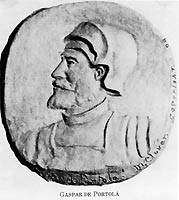
Last Sunday a local resident discovered a pile of human remains near Hillcrest Park in the city of Fullerton, and immediately broke with the protocol dictated to fans of police procedurals going back to the days of Quincy M.D.
Instead of leaving the bones, possibly unearthed by recent rains, the citizen scooped them up and transported them to the police station.
Luckily the unnamed do-gooder doesn't appear to have compromised a criminal investigation.
]
“We don't think [the bones] are of any modern significance,” said supervising deputy coroner Daniel Akin, who explained that following an initial exam, the remains are believed to be a mix of human and animal. Further examination by an anthropologist, which will determine if the skeleton is Native American, is pending. According to Akin, it could be months before the investigation is complete.
For now, what is certain is that the bones are old–and Hillcrest Park is a crossroads to history.
In 1769 the Spanish crown sent explorer Don Gaspar de Portola on an expedition of Alta California in an effort to forestall Russian encroachment from Alaska (among other reasons). Father Juan Cresíi accompanied Portola on the adventure–which snaked through modern day Orange County–keeping a journal of the trek (it's a tough read, as Crespi was fond of measuring his travels in “leagues.”)
Assistant Archivist Chris Jepsen at the Orange County Archives recently sent the Weekly excerpts from a 1963 article titled “The March of Portola,” featuring the writing of revered county historian Don Meadows. The article specifically tracked the explorers' wanderings through what is now Fullerton.
“Chapman Avenue, Fullerton, was probably crossed near Acacia Avenue,” Meadows wrote. “Reaching the hills, an ascent was made to the top of the ridge northeast of Hillcrest Park, where camp was established.”
The article also described an Indian village near a pool of water above what is now the Brea Dam. In his diary, Crespi referred to these villagers as “friendly heathen,” even before the establishment of the Orange County Republican Party.
For now the question remains whether the skeleton discovered is one of California's early inhabitants, or perhaps its early colonists–time will tell. If it's determined the remains are Native American, a representative from the state government will determine who their most likely ancestors are so a proper burial can be performed.


